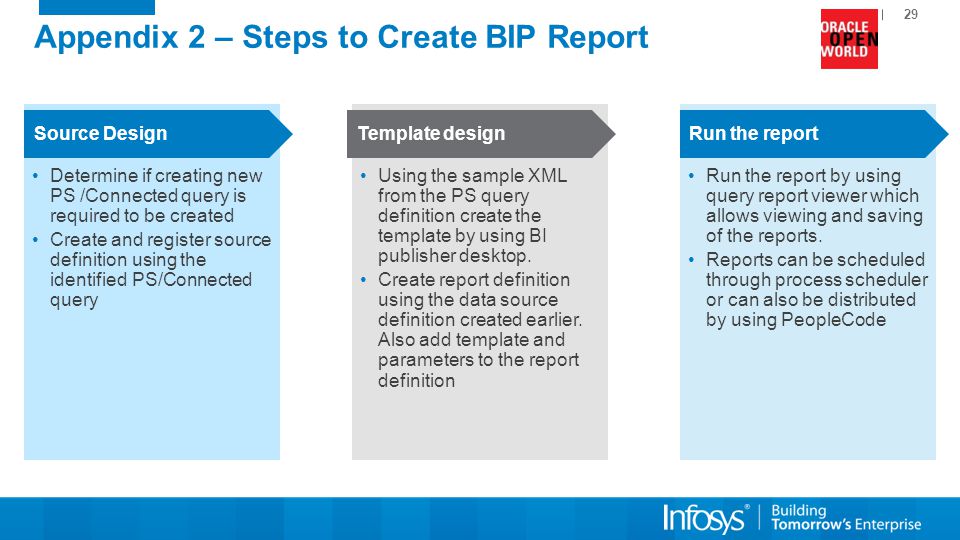

When defining the xml file always make sure you close every element block. The dataStructure block defines the output columns of the data. Optionally your are able to run some trigger at a stage of the data generation (quite handy sometimes :-)). The dataQuery block contains the sqlStatement block where you define the SQL query (in conjunction with any parameters). You define these parameters later also in the concurrent program definition. In this section your define the names, datatypes and possible default values for parameters used in your query. The next element set is the parameters section.

A data template is a simple xml file with a defined number of elements.Ī basic data template containts the dataTemplate element where you define the name of your template and a description. The first thing you need to do is to create a so called Data Template. Let’s start with a simple query which generates a list of application user names together with the name of the assigned employee.ĪND SYSDATE BETWEEN per.EFFECTIVE_START_DATE AND per.EFFECTIVE_END_DATE In later posts I’ll explain the other nice features of BI Publisher.įirst we need to have s SQL query which you want to migrate to BI Publisher.

I’ll explain in this article how you can use this functionality. The report can, for example, generate an XML file which can be opened with Microsoft Excel. Using this you’re able to migrate your own created SQL queries into a nice report which an end-user can run himself including custom parameters. Table 4-1 summarizes what is supported for each data set type.In my current project but also in previous ones I make use of the BI (XML) Publisher functionality of Oracle E-Business Suite. Other types of data sets may support all, none, or a subset of these features.
#Bi publisher add parameters full#
SQL Query data sets support the full set of available parameter features. Support for parameters varies based on the data set type. For more information about the report-level settings, see the section "Configuring Parameter Settings for the Report" in Oracle Fusion Middleware Report Designer's Guide for Oracle Business Intelligence Publisher. Once you have defined the parameters in the data model, you can further configure how the parameters are displayed in the report as a report-level setting. Note that the data type must also be "Date" and the format must be Java date format. See Section 4.4, "Adding Lists of Values."ĭate - the user selects a date as a parameter. To create a menu type parameter, define the list of values first then define the parameter and associate it to the list of values. This option supports multiple selections, a "Select All" option, and partial page refresh for cascading parameters. A list of values can contain fixed data that you specify or the list can be created using a SQL query that is executed against any of the defined data sources. Menu - the user makes selections from a list of values. Text - the user enters a text string to pass as the parameter. Adding parameters to a data model enables users to interact with data when they view reports.īI Publisher supports the following parameter types:


 0 kommentar(er)
0 kommentar(er)
